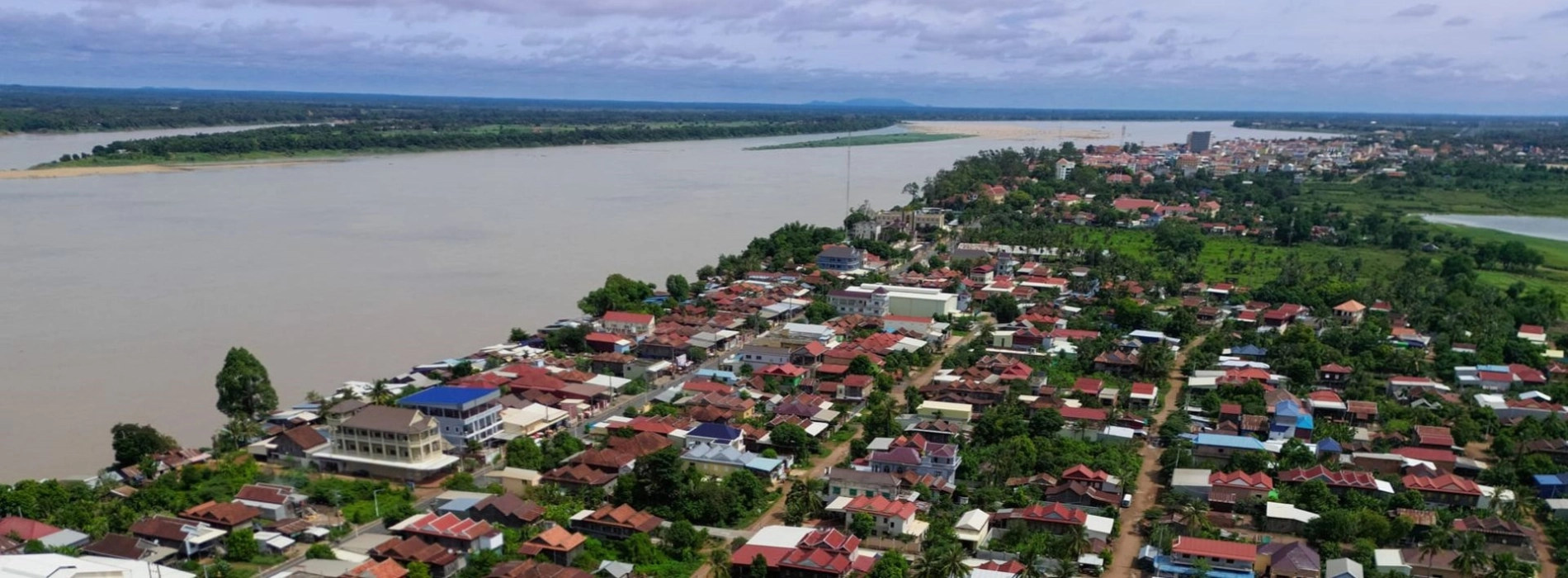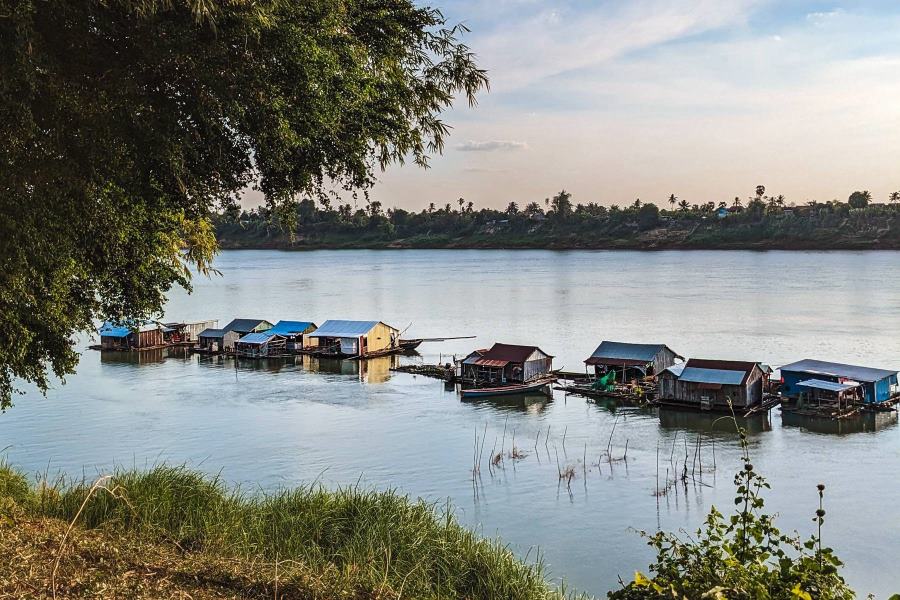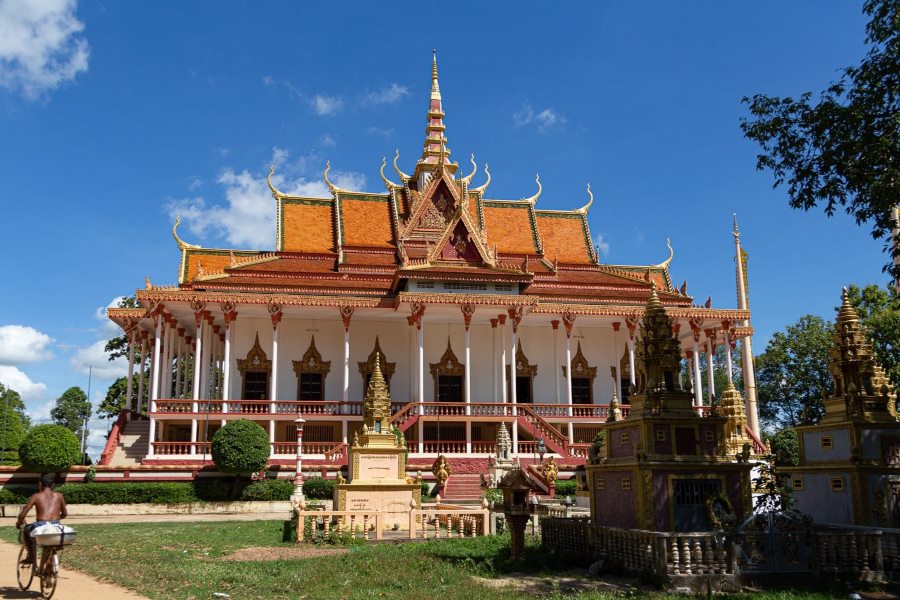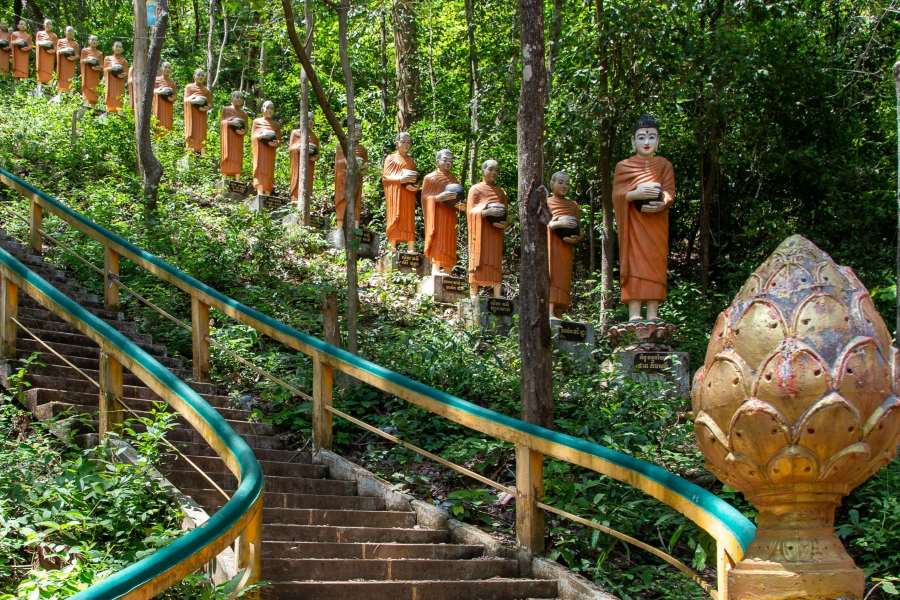Kratie

Kratie is a small province located in northeastern Cambodia. The town of Kratie lies along the peaceful Mekong River, offering beautiful and picturesque scenery with hundreds of charming islands scattered across the river.
For those who love a gentle rural atmosphere, enjoy a touch of nature, and immerse themselves in a simple and serene lifestyle, Kratie is truly a great destination for travelers.

Kratie is a small province located in northeastern Cambodia (Cre: Visit Kratie)
The capital province is a small city in the Northeast of Cambodia, bordering Stung Treng province to the North and Tbong Khmum province to the South. This small city of Kratie is located near the gentle Mekong River. If you come to Kratie, in addition to visiting the city, you will be able to quietly observe the Mekong River flowing peacefully.
Giving an inspiring insight into the Cambodian way of life, a visit to Kratie is full of nature, culture and warm hospitality.

The capital Kratie is a small city in the Northeast of Cambodia (Cre: Phuotvivu)
With a long history and unique culture, this province has undergone many changes and developments to become one of the provinces with great tourist attractions in the country.
Like many other lands in Indochina, this province also experienced the French colonial period. The French built many architectural works and infrastructure here.
After Cambodia gained independence, Kratie experienced great changes during the long civil war. In recent years, Kratie has focused on developing tourism, taking advantage of the Mekong River and historical relics.

Kratie also experienced the French colonial period (Cre: Planet of Hotels)
This is the homeland of the rare Irrawaddy river dolphin, a precious species. It’s wonderful if you are a nature lover, interested in eco-tourism and wildlife, as you will definitely spend a few days in Kratie relaxing on boats waiting for a chance to see an Irrawaddy dolphin.
In addition to its diverse aquatic life, this peaceful rural area is also known for its ancient temples, traditional stilt houses, and rice fields sparkling under the gentle golden sunset.
This province offers those who love exploration an inspiring glimpse into pristine nature, a deeper experience of rural Cambodian life, and a land closely connected to the legendary Mekong River.
.jpg)
This province offers those who love exploration an inspiring glimpse into pristine nature (Cre: Visit Kratie)
The main means of transportation in Kratie province are motorbikes, bicycles, boats and tuk-tuks. These are convenient, fast and cost-effective means of transportation when you travel to Cambodia.
From major cities, you can get here by plane because there is Kratie Airport (KTI). In addition, you can use cars and buses to get here conveniently. The roads in this province are not too difficult to travel, so you can rest assured with your schedule.
.jpg)
The main means of transportation in Kratie province (Cre: Roma Lim)
The dry season (November to April) is the best time to visit this province if you want to take advantage of the beautiful weather and participate in many activities. However, if you want to experience a more peaceful and romantic Kratie, the rainy season (May to October) is also a quick option to consider.
In addition, you should bring light-colored clothes because the fashion here is typical of a tropical monsoon climate. There are months that are quite hot, so preparing light-colored clothes will help you feel more comfortable.

The dry season is the best time to visit Kratie (Cre: InsideAsia Tours)
Read more: Cambodia excursions
The best experience associated with this province is watching river dolphins swimming in the Mekong River. This rare freshwater dolphin is on the brink of extinction, with only a few individuals left. The best place to see dolphins is Kampi, 20 kilometers from center province.
Once in Kampi, you need to hire a boat. This is easy as the boat operators are very welcoming. For just a few dollars, you can float on the water for 1 to 2 hours and watch the dolphins swim and play.
.jpg)
The best experience associated with Kratie is watching river dolphins swimming (Cre: arisecambodia.com)
If you have more time, don’t miss Koh Trong (or Koh Throng) – a must-visit destination in Kratie province for experiencing the ‘real’ rural life of Cambodia.
On an island without any cars, Koh Trong is truly a paradise in the middle of the Mekong River, ideal for those seeking healing from nature.
Just across from Kratie town, you can reach Koh Trong in just 5 minutes by taking a community ferry. After disembarking, you can head straight to the Community Tourism Center to rent a bicycle and book a homestay if you wish to stay overnight. Bicycles are available for rent and are the best way to explore the island and wave to the friendly local residents.

Koh Trong (or Koh Throng) – a must-visit destination in Kratie province (Cre: Felicia C)
Wat 100 Columns is located in Sambor District, about 35 kilometers north of Kratie province on National Road 7. Painted in pure white and decorated with Buddhist flags, Wat 100 Columns (Wat Sor Sor Mouy Roy) is also one of the largest and most beautiful temples in Cambodia.
The temple you see today was renovated in 1998 and actually has 116 columns. When you step inside the temple, you'll be impressed by the colorful murals covering everything from the floor to the ceiling. The vibrant gods, as if stepping out from Buddhist stories, will leave you in awe.

Wat 100 Columns is located in Sambor District (Cre: Cambodia Begins at 40)
Phnom Sambok is the main cultural and tourist center of Kratie Province, built in the 15th century. Located about 10 kilometers north of Kratie town, Phnom Sombok is located on a high hill, the temple is dedicated to a Buddhist monk named Neak Voan, who lived, became a monk and taught his disciples here. To visit the stupa at the top, you need to climb 300 steps.
The path up the mountain will attract you with long rows of life-sized statues of monks. As a reward for climbing to the top, you will be rewarded with a magnificent panoramic view of the Mekong River from above.

To visit the stupa at the top, you need to climb 300 steps (Cre: Cambodia Begins at 40)
In fact, 80% of Kratie province’s population lives along the banks of the Mekong. While the town is steeped in French colonial elegance, the river is home to endangered Irrawaddy dolphins and hundreds of islands.
A range of traditional Cambodian food, plus some international options, are available in this province. There are a couple of specialities the locality is known for – a raw river fish served in banana leaves called nehm, and sticky rice, beans and coconut milk steamed inside bamboo vessels known as krolan. Both can be found in abundance across the town. Other food typically eaten here is chicken curry served with vegetables, and plenty of fish dishes – given the proximity of the Mekong River.

Cuisine in Kratie (Cre: truebluefishing)
Khmer New Year is the most celebrated event in Cambodia, taking place in April, for three days. During the festival, there are many religious ceremonies taking place at temples. In rural Kratie, other celebrations are mainly family events.
You can visit temples and pagodas to see how the locals celebrate the event – remember to dress appropriately. Some Khmer families visit hotels and some establishments remain open during the holiday, so this is the place to enjoy the festive atmosphere.

You can visit temples and pagodas to see how the locals celebrate the event (Cre: Visit Kratie)
Kratie Province - Cambodia, a destination where the modern world meets the people's lives quite close to nature. The peace and gentleness on the Mekong River gives any tourist who comes here a feeling of healing. Let's plan to explore the beauty of this province right away!
Read more: Cambodia tours 15 days
Embark on the Kratie Tour 2 Days: Cycling & Kayaking Experience for an immersive...